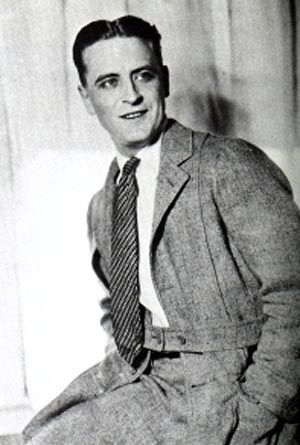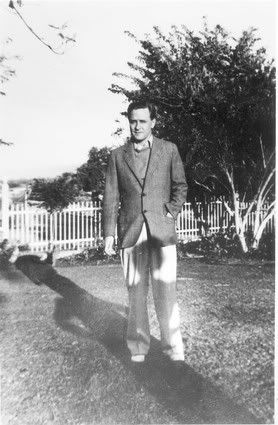


The 1920's, also known as the Jazz Age, were wild times, and Francis Scott Key Fitzgerald was its king. Although he lead one of the most wild and luxurious lifestyles of anyone during the decade, Fitzgerald was known more for his prominent works of literature, which have gained a permanent place among the American classics.
Fitzgerald was born on September 29, 1896 in St. Paul Minnesota. His prename, Francis Scott Key, was given to him to honor his distant ancestor who wrote the National Anthem. Fitzgerald's father, Edward Fitzgerald, was from Maryland while his mother, Mary McQuillan, was the daugher of an Irish-Catholic immigrant.
Fitzgerald entered St. Paul Academy when he was a boy, and started to write for the school newspaper when he was thirteen. During 1911-1913, he attended the Newman School, a Catholic Prep School in New Jersey. There, he met Father Sigourney Fay, who encouraged him to pursue his ambitions and to achieve personal success and distinction. Afterwards, he entered Princeton University, where he grew on his writing abilities by writing for school media. However, he neglected his studies and was put on academic probation.
In 1917, Fitzgerald joined the army to fight in World War I. In June of 1918, he was assigned to Camp Sheridan in Alabama. There, he fell in love with Zelda Sayre. After being turned down during a marriage proposal due to his lack of success, Fitzgerald returned to St. Paul to begin work on his novel, This Side of Paradise. His novel was published in March of 1920, and he instantly became a success. He had gained the kind of success and wealth that he had desired for so long, and in a short time, he and Zelda married in New York. He moved to an apartment in New York City where he wrote his second novel, The Beautiful and the Damned.
After Zelda became pregnant in 1921, they settled down back in St. Paul. And in October of 1921, their daughter, Frances Scott Fitzgerald, was born. Luxurious parties and alcoholics bouts were common in the Fitzgeralds' home, especially among Zelda, which triggered many domestic rows.
In order to escape the distractions of New York, Fitzgerald moved to France in 1924 to work on his novel, The Great Gatsby. When the novel was published in 1925, the sales were fairly disappointing, but theater and movie deals brought in more income.
The Fitzgeralds returned to the United States in 1927, but Zelda's unconventional behavior had become very eccentric. During 1930, Zelda's physical and mental condition had deteriorated to the point where she suffered a mental breakdown in April of 1930. She entered the Prangins clinic to receive psychiatric treatment for her mental illness. As a result, Fitzgerald had to suspend his novel writing to write short stories to pay for her costly treatment.
In 1934, Fitzgerald's final attempt at a hit novel, Tender Is the Night, was published in hopes that he could earn enough for Zelda and his daughter. However like The Great Gatsby, its sales were disappointing. And by 1936, Fitzgerald was ill, drunk, and in debt. So he headed off to Hollywood in 1937 hoping to become a prominent screenplay writer. However, the only screen credit he received was for the film, Three Comrades.
After failing in Hollywood, Fitzgerald fell in love with the young columnist, Sheilah Graham. After MGM dropped his options in 1938, Fitzgerald returned to novel writing. He had worked on The Love of the Last Tycoon, but Fitzgerald died from an unfortunate heart attack in Sheilah's apartment on December 21, 1940.
Although Fitzgerald's writing was not considered to be of high quality, because of the long held belief that he was an irresponsible writer. But then during the late 1940's, a revival of Fitzgerald's works made both him and his works more appreciated. And by the 1960s, Fitzgerald had secured a place in literary history as one of the most prominent writers ever.
information by http://www.angelfire.com/co/pscst/fitzgerald.html






Good 2nd post. 75/75
ReplyDeleteMs. Donahue